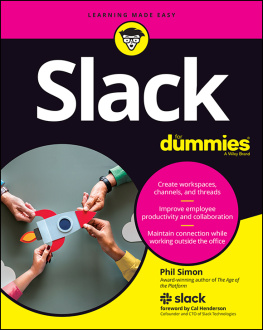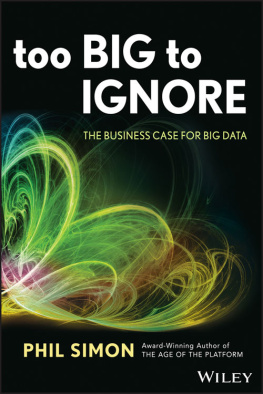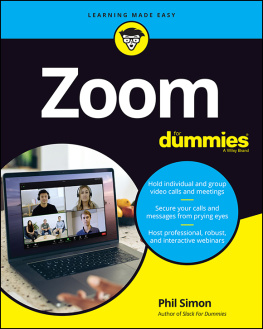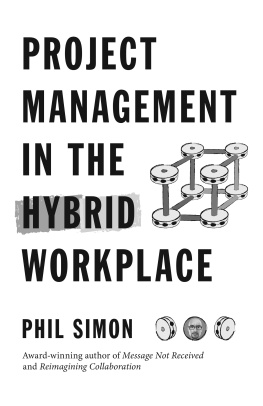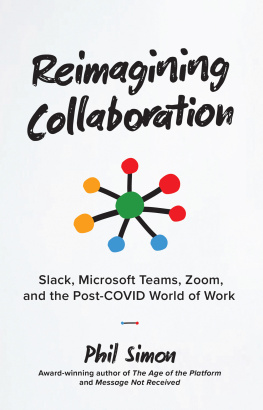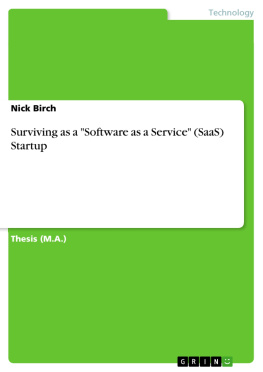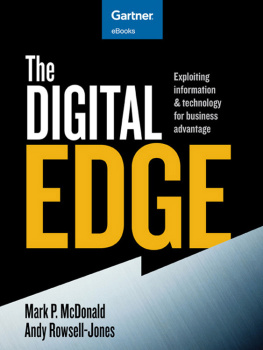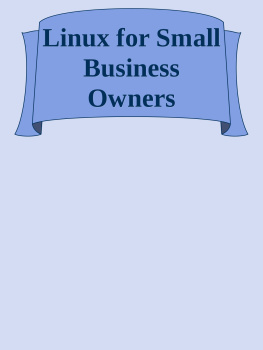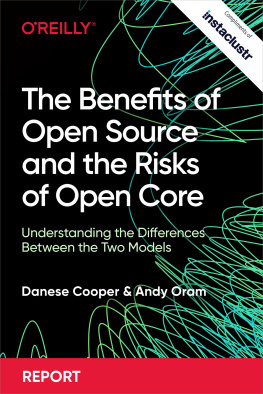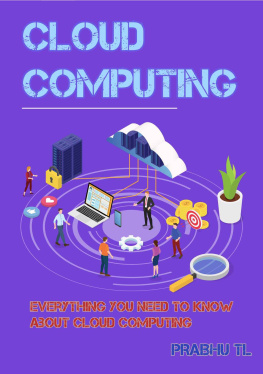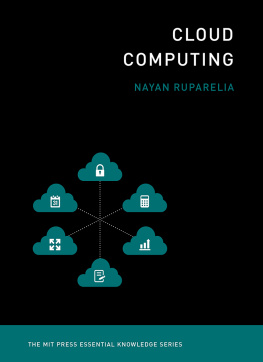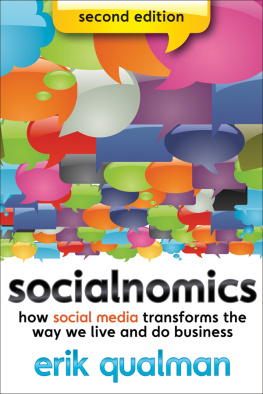The New Small
New Jersey
Production Director:
Kristen Eckstein
Imagine! Studios, LLC
http://www.artsimagine.com
Cover Designer:
Luke Fletcher
http://www.fletcherdesigns.com
Editor:
Kathleen Atkins
http://www.kathleenatkins.net
Proofreaders:
John Pierce
http://www.flyingspress.com
Karen Gill
Book Website Developer:
Shiri Amram
http://www.shiridesignstudio.com
2011 Phil Simon
All Rights Reserved. No part of this work covered by the copyright herein may be reproduced, transmitted, stored, or used in any form or by any means graphic, electronic, or mechanical, including but not limited to photocopying, recording, scanning, digitizing, taping, web distribution, information networks, or information storage and retrieval systems, except as permitted under Section 107 or 108 of the 1976 United States Copyright Act, without the prior written permission of the publisher.
Published by Motion Publishing, LLC
Caldwell, New Jersey
ISBN-13:
978-0-9829302-3-6
Library of Congress Control Number:
2010918004
To my favorite tweeps: Julie Hunt Consulting (@juliebhunt) and Robert Lavigne, PMP (@RLavigne42)
In a world where I feel so small I cant stop thinking big.
Neil Peart, Rush, Caravan
Foreword: The
Not-So Revolution
This book is about me. Let me explain.
Phil wrote it for lots of people who are dealing with small business issues, and I am one of them. He just didnt realize that he wrote it for people like me, but he did. You see, I hang with the authors who have written books that touch on some of the same subjects covered in The New Small. Of course, Phil knows this. He spends time with them, too.
Phil and I are part of a new movement thats afoot. I dare not say revolution (the dreaded R word), because its smaller than that. But many of us have left the cubicle farm, opting to start our own shops. We are starting and growing our own small businesses, propelled by a different management ethos and empowered by the exciting technologies discussed in this book.
I am writing this while sitting in our office in Portland, ME, with my right-hand man, Rob. We run a distributed company, just like Fuentek, the subject of Chapter 13. Were helping people find new business by building virtuous cycles, a topic covered in Chapter 15. These are just a few of the subjects I believe in deeply. And there are many more covered in this important book.
See? Phil wrote this book for me. He just didnt know it at the time.
So, you now know what this book is generally about. But who reads Forewords, anyway? Three groups of people:
- Obsessives. (I get it.)
- People who want the bigger story.
- People who are evaluating whether to buy this book.
Maybe you are sick of working in a faceless office. Perhaps you own a small business because you wanted to validate your soul and your heart. You might want to understandand then usethe technologies that everyone seems to be raving about. Or you could be an entrepreneur with a nifty idea. If you meet any of the above criteria, this is the book for you.
If youre part of the second group, the bigger story is that youre not alone and that were here for you. Some people cringe when they hear the word technology. You might be worried that The New Small will read a bit like a book written for the online generation. Yes and no. Much of what the folks living in front of screens are discovering will really help small businesses of many flavors. In other words, this is not a book that only techies will understand. On the contrary, Phil profiles many bricks and real world businesses, including a law firm, a dental office, and a restaurant. These are twentieth-century businesses doing twenty-first-century things. If they can, you can.
In Phils book, youll find a blizzard of valuable tips, lessons, and observations, backed by some incredible stories. Youll get a sense that some of the content is perfect for you, and some of it just might not apply to your business. Of course, this is true with all books of this type. But dont worry. Youll know which is which in no time. And dont be surprised if an Aha! moment comes from an unexpected source.
The New Small is kind of a big deal. Youll want to get out a pen because you are going to be marking it up quite a bit. And when you come to the conclusion that its the book for you, buy a few copies and give them to the people in the groups mentioned above. We might as well keep the revolution going, right?
Check that. Lets not use the R word.
Chris Brogan
CEO of Human Business Works
http://www.humanbusinessworks.com
November 2010
Preface
A pessimist sees the difficulty in every opportunity; an optimist sees the opportunity in every difficulty.
Winston Churchill
A Little Yarn about Tim
Back in November of 2009, I was riding a spin bike at my gym in West Caldwell, NJ. A guy next to me was reading a book, and the two of us soon started talking. It turns out that, like me, the man was a long-time technology professional. Not surprisingly, we clicked instantly and began an interesting conversation, fueled at least in my case by endorphins. Twenty years my senior, the guy (Tim) had been around the block a few more times than I hadalthough he had a young spirit. Tim and I were surprised to find out that I used to work for his then-employer (call it Company X), a massive consulting firm with tens of thousands of employees in hundreds of offices all over the globe. Tim asked what I was doing now, and I told him that, in addition to consulting, I also write and speak about technology-related topics. The conversation quickly turned to emerging technologies, the theme of my then-unreleased second bookThe Next Wave of Technologies. At that point, Tims demeanor suddenly changed.
Man, I wish that Company X did more with clouds and SaaS, Tim lamented. I mean, we host webinars and hold meetings, but we dont really do anything truly innovative for our clients. Our business is still primarily about putting butts in seats. I just dont see that changing anytime soon.
Its not like we use these new technologies anyway, Tim continued, a bit wistfully. We sure dont practice what we preach. Id love to help our clients embrace the futureand work for a company that did the same.
Tim wasnt exaggerating; I had worked for Company X for a few years before I went out on my own. I knew all too well that its management tended to suffer from a myopic focus on quarterly earnings, a bureaucratic culture, and a general aversion to change. Despite having a wide variety of tools that ostensibly encourage workplace flexibility and collaboration, it relied on outdated methods such as massive voice mail and e-mail blasts. Consultants rued long and tedious conference calls after a long day at a client site.
At a high level, Tim and I were talking about The Innovators Dilemma, Clayton M. Christensens classic business text about the difficulties that companies face as they mature: the very products, services, and conditions that have enabled businesses to achieve some level of success now inhibit their future success. The dilemma represents a fundamental challenge for all businesses. Success is fleeting, and change is permanent. At some point, most organizationsparticularly large onesstruggle with having to stick to their knitting while concurrently cannibalizing their business models. Its not an easy task, and the business landscape is littered with organizations too slow to adapt to forthcoming change. Tims company was stuck squarely in the middle of this quandary.
Next page

